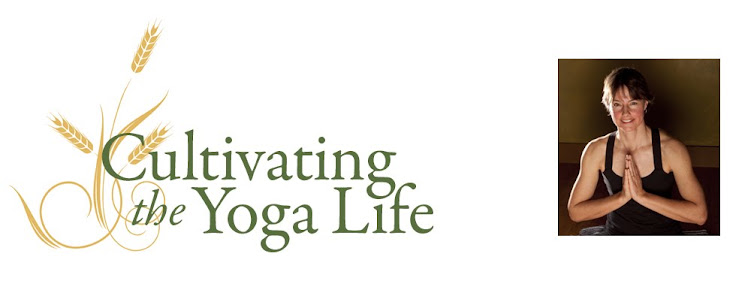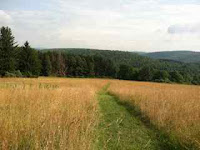This weekend found us at our farm with another family. They also have two girls, the oldest of which is in the same grade and school as our oldest. The mother informed me of some homework the girls had in science; they were to find three bugs, pop them in a jar with a cotton ball soaked in nail-polish remover, and then stick them with a pin onto a foam diorama, making a display of the bugs depicting them in a “natural habitat.”
The other mom and I are good friends, and kindred spirits in following a spiritual path. It didn’t take much discussion to discover we were both a little torn. The idea of the girls tossing a living thing into a stinky jar to asphyxiate it didn’t settle right, even if it was “just” a bug.
But, let’s be honest. I’ve thoughtlessly smashed quite a number of bugs in my day. Wasn’t it a little hypocritical to suddenly take the high road now? And...we were at the farm, probably the best location in the world to find bugs, both indoors and out. Finding three bugs each would be the easiest homework they’d have all year.
That much was true...within minutes they had two bugs each, and without even leaving the dining room. Given that the critters were in “our” space, it just didn’t feel that evil to plop them in the jar.
Wanting the girls to also find some bugs in nature, I led them outdoors to the tall grass around the ponds. We crawled around, and suddenly came upon a crowd of crickets. We grabbed up several, quickly surpassing the required three bugs, and viola! Mission accomplished.
But, hanging around the pond in the sunshine felt so good that we took our time heading back to the house with our bugs, and that’s when it happened. In the very tall grass right next to the pond, I saw him.
“Eva! Look at this!”
This was it...our triple A+, eye-popping, celebrity-ensuring, cherry on the cupcake find. The most gorgeous spider in the world. An inch and a half from the tip of one long, thin black leg to the next, with a very large, bulbous black body highlighted in bright, lemon yellow spots. Spread out in the center of a huge web woven in the grass. Amazing.
“I want it!!” Eva said.
“It’s wonderful!” I said. “You’d get an A for sure!”
Then, my friend spoke up. “But Eva, you already have your three bugs. He’s so beautiful. Don’t you think we should just leave him?”
Silence. Damn. Damn. I knew she was right. But, he was so gorgeous. Wouldn’t that be the insect to bring into school!
“But I want him!” Eva said again. She came forward with her jar. “He is so cool!”
“Eva, I think she’s right,” I said. “We already have all the bugs we need. Why don’t we leave him here?”
Eva countered, I did also, and after a couple of rounds we sat there, just looking at him, so still in his web.
“Maybe he’s dead,” I mused. “If he’s dead, then it would be okay to take him.”
“Yeah!” Eva said. “He’s so still! I bet he’s dead.”
We moved forward with a little stick. As we got closer, we both saw a leg move. Damn.
We sat there a little longer, debating this spider’s life vs. my daughter’s potential coup. Then it happened. Quick as a flash, instead of a spider sitting alone in it’s net, there was a spider holding a bit, fat fly.
“Did you see that?!” I cried. “He just caught a fly!”
“Cool!” Eva said. It sat very still, but, having read Charlotte’s Web several times, I believe that at that moment, it was slowly sucking the blood out of the fly.
The plot thickened. Since the blood-sucking spider clearly wasn’t following ahimsa (non-violence), did that maybe let us off the hook? After witnessing this viscous display, maybe it was okay to let it have it’s last meal, then toss it into the stinky jar?
Fat chance. I knew killing for survival and killing for an A were not the same thing. But, Eva clearly wanted the spider, so I had to try another line of logic. Eva had told me once that she liked the philosophy of Taoism.
Now, other than every so often reading a few pages of the Tao Te Ching, I know nothing about the concepts of Taoism. Maybe Lao Tsu’s home was lined with little bugs, impaled with stick pins onto painted replicas of “natural habitats.” But, I really doubted it.
“Eva, don’t you think that Taoism frowns on killing that beautiful spider?” I asked.
“Mom!” she rolled her eyes. “That’s not what Taoism is about!”
“What’s it about?”
“It’s about loving and appreciating nature and animals and stuff!”
“Well, doesn’t loving and appreciating this spider mean not killing it and sticking it with a pin?”
“No, it doesn’t.”
We both knew that neither one of us knew enough about Taoism to score any points. But, there was one thing I did know.
“Eva, sometimes following the high road on our spiritual journey means making difficult decisions.”
“What’s ‘the high road’ mean?”
“It means doing the right thing, even if we don’t get the A, or impress other people. It’s following our spiritual principles, even if that means giving up something we really want.”
Just then, in a flash, there was another flurry of action. Suddenly the fly was completely wrapped in white.
“Ooooh!” we both said.
We sat quietly for a minute longer, watching the spider finish the process of creating his meal. “You know,” I said. “If you had killed the spider, we would have never seen this.”
“I know,” Eva agreed.
I looked at the big, beautiful spider, in the sunlight, enjoying a meal in the high grass on the banks of the pond. That would be the coolest thing in the world to bring to school. And the saddest.
“Eva, do whatever you want to do. I have to go in to make lunch,” I said as I got up.
I went inside and as I worked I looked out the window at Eva still sitting in the grass, watching the spider. A couple minutes later she came inside.
“Did you get it?” her friend asked her.
“No,” she said. “If it was already dead, I would have taken it. But, I didn’t want to kill it.”
Now, I wish I confidently led her in the morally right direction, but truthfully, a part of me wanted her to plop that spider in the jar. It would have been amazing to share. The farm has so many truly beautiful bugs; dragonflies, beetles, grasshoppers. We could have created a kick-butt diorama. That spider would have been so impressive.
It was a little unnerving. After all, if I was truthfully following the “spiritual path,” with the “spiritual principles” that I held up so righteously to Eva, I wouldn’t have thought for one minute of harming that spider, right? If I were really successful with my practice, wouldn’t the greed of wanting to impress, at the expense of a life, have never existed? Is practicing aparigraha (non-greed) not feeling greedy...or feeling greed but not following through?
The answer is, aparigraha means not feeling greed. It’s the feeling as well as the action. Clearly, we made the right decision for us. However, I needed to talk both Eva, and myself, into it. My friend never had a moment’s hesitation about what was right, and I admire her for it. Perhaps as I continue practicing, I will flow into such clarity.
But, I also have no doubts that if this day had happened 10 years ago, that spider would be stuck onto foamcore right now. There has been progress.
We will find ourselves struggling with decisions, and hopefully make the right choices, many times. Each small decision can be a small triumph in our practice. “Practice” does not mean perfect. It means needing to think, over and over, until it becomes second nature. And, if we need to consider or even struggle with each decision, instead of automatically doing the right thing, so be it for now. Over time the rough edges of effort will smooth into ease, and there will be no choices. We won’t need to think.

















